Read Reviews
The Best Weeding Tools

-
Best for large weeds - Fiskars Xact Weed Puller
-
Best for patio slabs - Gardena Combisystem Patio Weeder
-
Best all rounder - Garden Tools Multifunctional Manual Weeder
-
Best for the lawn - Spear & Jackson Daisy Grubber
-
Best for driveways - Newman and Cole Long Handle Weed Brush
Weeding Tool Reviews
1. Fiskars Xact Weed Puller[ SAVE 15% ]
Best for large weeds
- At 100 cm, there is no need to kneel on the grass to remove weeds, can be done from a standing position
- Requires virtually no strength meaning even those with injuries or limited mobility will find it easy to use
- The size of the hole left in the lawn is very small, there’s no filling in required
- Easy to release the weed into a wheelbarrow or bucket without having to crouch
- Harder to use in compact soil - works best when the ground is soft
- Most effective with large weeds, doesn’t close tightly enough around small weeds
- No instruction manual included means working out how to use it most effectively is difficult
- Type of Tool
- Weed Puller
- Length
- 100cm
- Weight
- 950g
- Blade Material
- Stainless Steel
- Handle Material
- Plastic
- Effectiveness
- 5
- Design
- 5
- Ease of Use
- 4.5
- Comfort
- 4.5
- Value for Money
- 4.5
My first impressions of the Fiskars Xact Weed Puller were very good. It’s the most pricey of the tools I tested, yet it still remains very affordable.
Straight out of the box, I noticed that it’s surprisingly lightweight. The handle is made from plastic, which keeps the weight down, although Fiskars are keen to emphasise that the handle is glass-fibre reinforced!
At just 950 g, it’s very manageable and won’t be a nuisance to get out of the shed. This also means that it will still be light once it’s got a weed in its grasp, which is good because you don’t have to immediately release weeds when pulling them out – you can transport them to a bucket or wherever you want to put them
The primary selling point of this weed puller is that you can work without hurting your back. Suitable for gardeners of most heights, the 89 cm ‘working shaft’ is a good length, with an additional 10 cm of stainless-steel blades on the end which are inserted into the soil surface around the weed. There is also an option with a telescopic handle available, in case you’re concerned about this being too short.
To say I was pleasantly surprised by this weed puller would be an understatement. It worked brilliantly pulling weeds from both the lawn and our raised beds and, as Fiskars claims, there is no bending down required.
It doesn’t just remove the visible part of the weed. It gets down to the root so that they don’t grow back. And, if you’re worried that this sort of weed extraction might fill the lawn with mini-craters, the holes that are created by this weed puller are only a maximum of 4 cm in diameter, and easy to fill in by pushing the dirt with your foot.
That’s not to say that it’s perfect. The lack of instructions means some trial and error is needed. In fact, the first few minutes I was convinced it didn’t work at all. You need to push it into the ground, then slightly pull the tool towards you. This closes the tines at the bottom, trapping the weed. The food pedal is a handy feature and allows you to get it into the ground with relatively little effort.
Remove the weed puller from the ground, then with a little pressure on the orange section of the handle you can release the claws and drop the weed.
Due to the diameter of the base, it’s only really suitable for larger weeds, as small weeds won’t get caught easily in the puller’s jaws. You’ll also struggle to use it on ground that’s too hard – but when it rains, or the ground is damp from dew, the blades should be easy to push into the earth.
When used in these conditions, this is one of the best weeding tools available. It’s a useful long-handled tool that will help spare your back and it’s very effective at removing larger weeds.
Did you find this review helpful?
2. Gardena Combisystem Patio Weeder
Best for patio slabs
- Does a good job removing weeds on patios
- Double blade means it can be used for a variety of tasks
- Lightweight and compact
- Safe and non-slip thanks to the ergonomic handle and soft components
- Very small so not suitable for larger weeds
- Care needs to be taken not to damage the grout on the patio
- Physical labour is still required to remove tougher weeds
- Does not remove weeds from the roots
- Type of Tool
- Patio Weeder
- Length
- 38cm
- Weight
- 195g
- Blade Material
- Stainless Steel
- Handle Material
- Plastic
- Effectiveness
- 4
- Design
- 5
- Ease of Use
- 4
- Comfort
- 4.5
- Value for Money
- 4.5
Neat and compact, the Gardena Combisystem Patio Weeder is another weed puller that I was eager to put to the test. It has a contemporary design that initially looks a little complicated, but I was surprised at how easy it was to use.
Unlike the Xact weed puller, this weeding tool has been designed for patios. It has a hooked end that allows you to hook onto weeds growing between paving slabs, as well as a blade on the other side for precise removal. Gardena claims that this weeder can be used to remove grass, moss and weeds, leaving behind clean paving joints.
I was very impressed with the handle. It fitted well in my hand and was easy to grip, and I could have used it for a long period of time. The blades are also very good quality, sharp enough to remove weeds but not so aggressive that they will damage your patio! They have been ground on both sides which makes them both resistant and durable.
The handle is part of a combisystem, although I wasn’t able to test this. This means it can be fitted to any other combisystem handle, so you can easily change it if you prefer a longer handle.
So, did it work? While I found this weed tool did a good job removing weeds on patios, it certainly didn’t get down to the roots, although you wouldn’t expect that from this tool. It did a great job neatening up my front driveway and removing weeds between the pavings, though a fair amount of physical labour was required. Care does need to be taken not to damage your patio grout.
While this tool is compact and lightweight, this does mean that large weeds are harder to tackle. I’d recommend it for smaller weeds and neatening up certain areas.
Going by handle comfort and effectiveness, I’d happily recommend this weeding tool.
Did you find this review helpful?
3. Garden Tools Multifunctional Manual Weeder
Best all rounder
- The measurements on the handle are very helpful when planting
- A truly multifunctional tool that can be used for a range of tasks
- Feels good quality - the wooden handle has a nice weight to it and it’s made from stainless steel
- Removes weeds from the roots
- Good for tackling small areas such as between plants
- Not suitable for removing large quantities of weeds
- The handle isn’t quite as ergonomic as other models I have tested
- Type of Tool
- Multifunctional
- Length
- 30.1cm
- Weight
- 170g
- Blade Material
- Stainless Steel
- Handle Material
- Wood
- Effectiveness
- 4
- Design
- 5
- Ease of Use
- 4
- Comfort
- 4
- Value for Money
- 5
If you’ve not got a huge budget for your garden tools, I’d recommend the Garden Tools Multifunctional Manual Weeder. This multifunctional tool can be used for a range of gardening tasks, and the compact size means it’s very easy to store. The multifunctionality also makes it by far the best value for money of all the tools I’ve recommended.
This tool can be used for sawing, digging plugs, measuring, shovelling and even opening bottles! It has handy measurements which means planting bulbs accurately is much easier, and I’m confident it would do most of these jobs very well. But we’re here to talk about its ability to remove weeds. I tested this tool in my raised beds, as it was compact enough to get to the weeds in between the plants.
Straight out of the box I was impressed with the quality. It has a good weight to it, with a solid wooden handle. The stainless steel blade is engraved with measurements, which was a really useful touch. The total length is just 33 cm, part of which is taken up by the handle.
I found this tool to be very effective. It pulled weeds from the roots with relative ease, although I only managed to test it in soft soil. I found it most effective when used on dandelions and other weeds with long roots.
While comfortable to use thanks to the wooden handle, I wouldn’t want to use it for hours. The handle wasn’t as ergonomic as that of others I have tried. For this reason, I probably wouldn’t use it to remove large quantities of weeds and I would recommend wearing gloves to prevent blisters.
The charm of this weeding tool is in its simplicity. There are no fancy materials or design features. The construction is very good, and it made me realise that there’s often no need for complex and expensive weeding tools. I would be surprised if I’m not still using this 10 years down the line!
Finally, it was exceptionally easy to clean after use.
All in all, I’d highly recommend this weeding tool. I couldn’t believe how affordable it was given its functionality and quality.
Did you find this review helpful?
4. Spear & Jackson Daisy Grubber
Best for the lawn
- Easy to use thanks to the compact size and lightweight
- Did a good job removing weeds between plants without affecting the rest of the bed
- Pulled weeds from the roots so they won’t grow back
- Very effective - weeds simply popped free
- Crouching is required as well as some physical labour
- May struggle to pull weeds from the roots when the ground is harder as the handle isn’t quite long enough to get a lot of leverage
- Type of Tool
- Weed Puller
- Length
- 28.5cm
- Weight
- 130g
- Blade Material
- Stainless Steel
- Handle Material
- Wood
- Effectiveness
- 4
- Design
- 4.5
- Ease of Use
- 4
- Comfort
- 4.5
- Value for Money
- 4
Arguably the simplest of all the weeding tools I have tested, the Spear & Jackson Daisy Grubber is a great little tool. It’s just a touch more expensive than the Garden Tools Multifunctional Manual Weeder, although it doesn’t have the same multifunctionality.
This is another weeding tool with an almost unbelievably simple design. You can imagine gardeners using this tool 100 years ago, and I’m sure we will still be using these tools in 100 years’ time!
It, too, felt very good quality. The head is epoxy coated which I believe improves resistance to rust, scratches and humidity. While specifically designed for daisies, I used it to remove a range of weeds and it did a very good job.
It removes weeds from the roots with minimal damage to the lawn. The compact size makes it ideal for flower beds, as you can get in between your plants to remove the growing weeds without doing any damage. I also tested it on my lawn, and it was equally effective.
Like others I’ve recommended, there are a few design touches that just give it that high-end feel. The leather strap makes it very easy to carry, and I liked the subtle branding on the wooden handle. I’ve been fortunate enough to test a range of Spear & Jackson products now, and I’m always impressed when it comes to quality.
A couple of downsides. I can imagine this wedding tool getting harder to use in the summer months, or when the ground is very hard. There’s not much leverage to work with due to the compact size, so I think removing weeds without damaging the ground would be harder. Unfortunately, I wasn’t able to test this, as our ground is very soft. Thank you Great British weather!
Of course, this smaller tool does still need to be used close to the ground, requiring a lot of bending or kneeling, so it might not be the best weeding tool for gardeners with more limited mobility. It is, however, an inexpensive item that offers good quality considering how sturdy and effective it is.
Finally, while the design is very similar to the Garden Tools Multifunctional Weed Puller, it doesn’t have the same multifunctionality, yet it’s a little more expensive. For this reason, I’m not going to score it so highly when it comes to value for money.
I’d say this is one of the best weeding tools if you want an effective yet simple weeding knife. It has a comfortable, ergonomic handle and is very useful for removing both small and medium weeds.
Did you find this review helpful?
5. Newman and Cole Long Handle Weed Brush
Best for driveways
- Engraving with the brand name is a nice touch that makes it feel good quality
- Bristles are very stiff and feel very long lasting
- Does a good job cleaning patios and removing the build up of moss
- Long handle means it can be used from a standing position
- Doesn’t remove any large weeds, and wouldn’t work on grass
- Bristles are very heavy duty so care needs to be taken not to damage patio grout
- The most physically demanding of the tools I tested - a lot of effort was required to remove one weed
- Doesn’t remove weeds from the roots, more just breaks them apart so should be combined with a weed killer
- Type of Tool
- Weeding Brush
- Length
- 120cm
- Weight
- 476g
- Blade Material
- Stainless Steel
- Handle Material
- Wood
- Effectiveness
- 4
- Design
- 4
- Ease of Use
- 4
- Comfort
- 4
- Value for Money
- 4
Clearing weeds and moss from between paving without kneeling isn’t always possible, but the Newman and Cole Long Handle Weed Brush makes it a lot easier. It’s been designed for clearing smaller weeds from patios, while it can be used from a standing position which makes it ideal for those with limited mobility.
The first thing I noticed was the quality. With a wooden handle and a neat ‘Newman and Cole’ engraving, this weed brush felt thoughtfully designed from the start. The bristles are seriously heavy duty, made from wire. The working length is 120 cm, so it can be used fully from standing.
The bristles charge through smaller weeds that grow between paving stones. It’s most effective when used on smaller weeds and moss. I found it fairly useless on large weeds but on small ones growing between the cracks, well, you can see the results!
One downside I noticed is that a ‘scrubbing’ motion is required. This makes it more physically intensive than other weed tools I have recommended, as the weeds need a few passes. I didn’t find it particularly effective at removing weeds from the roots either. Instead, it broke them apart so they may come back. It did dramatically improve the appearance of our front driveway – an area that has required some TLC for a while!
Another thing to note is that the bristles are very tough. For this reason, I opted not to use it on our new patio in our garden, instead opting for the driveway. I would be concerned that it could damage the grout if used too vigorously, so care is definitely required.
The bristles did get clogged with damp dirt and bits of leaves too, which have proved difficult to remove. In hindsight, I should have used it in drier weather.
All things considered, I was pretty impressed with this weed brush. While fairly labour-intensive, it did a great job tidying up a slightly neglected area of our home!
Did you find this review helpful?
Product Tester
As much as I hate to admit it, my garden needs some TLC. The incredibly wet summer has made it harder to stay on top of grass growth and weeds. While this means the view from our window isn’t quite as lovely as it could be, it does mean that testing weeding tools is a whole lot easier.
To test the tools, I simply tackled a small section of my garden with each tool. I tested them all on the same day, and due to the amount of rain we have had, the soil is fairly soft. This meant each weeding tool is naturally slightly easier to use, but I still managed to get a good indication of how it would perform pulling weeds from harder ground.
I really wanted to focus on the comfort and ease of use, as well as the effectiveness. While the handle comfort and ease of use are’t too important if you’ve only got a few weeds to pull, if your garden has been left to get very overgrown, ease of use is arguably just as important as effectiveness.
Compare Product Features
Use the dropdown to sort the table by the feature you want to see.
Fiskars Xact Weed Puller
- 4.7
- Weed Puller
- 100cm
- 950g
- Stainless Steel
- Plastic
Gardena Combisystem Patio Weeder
- 4.4
- Patio Weeder
- 38cm
- 195g
- Stainless Steel
- Plastic
Garden Tools Multifunctional Manual Weeder
- 4.4
- Multifunctional
- 30.1cm
- 170g
- Stainless Steel
- Wood
Spear & Jackson Daisy Grubber
- 4.2
- Weed Puller
- 28.5cm
- 130g
- Stainless Steel
- Wood
Newman and Cole Long Handle Weed Brush
- 4
- Weeding Brush
- 120cm
- 476g
- Stainless Steel
- Wood
How to Choose The Best Weeding Tool
If there’s one thing us gardeners have in common when it comes to our beloved outdoor spaces, it’s a mutual hatred of weeds.
Having the right tool for the job can make all the difference. A good weeding tool will make the job of removing weeds much easier.
Some of the best weeding tools will let you pull tough weeds out by the root, often working even on well-established, deep-rooted weeds like dandelions. Others will be more effective on smaller weeds.
READ NEXT: Weed Identification Guide
The following guide will help you choose the best weeding tool for you to use in your garden:
The Benefits of Using a Weeding Tool
- No Chemicals Required
Using chemicals is an effective approach to weed removal, but even the word ‘chemicals’ starts ringing alarm bells for some people – and perhaps rightly so.
Not only can it end up quite expensive to buy herbicides, they can also have negative effects on the environment. One of the biggest problems is that the chemicals have the potential to remain ‘active’ in the soil for a long time; as a result, they can have adverse effects on bio-organisms, animals, and plant life that weren’t the desired recipients of the product.
Using a weeder tool gets rid of the need to use chemicals – sure, weeding tools take longer to use, but if you’re not a fan of herbicides they’re a great option.
- Remove the Entire Weed
The best weeding tool will allow you to remove the entire weed, including the roots.
Leaving the roots behind in the soil will mean they only grow back again in a few weeks. To effectively eliminate the weed, you need to remove them from the root up.
We’ll go into more depth about the different types of weeding tools below, but both hand-weeding knives and claw weeders can effectively remove the taproots of bigger weeds like dandelions. Of course, there are also weeding tools that aren’t capable of removing long rooted weeds, so you need to choose carefully depending on what you require.
- Weed More Comfortably
Weedings tools can definitely make the process of removing weeds more comfortable.
Different types of weeding tool can achieve this in different ways. A weeding tool with long handles can help avoid knee and back pain whilst weeding. This is possibly one of the greatest benefits of using a weeding tool.
Alternatively, smaller weeding tools can be more efficient than using generic gardening tools for the same job. Weeding tools tend to make weeding lighter work because they’re intended for this purpose, as opposed to using a tool which has many different uses (like a trowel).
Different Types of Weeding Tool
There are several different types of weeding tool, some of better suited to certain job than others. Therefore, depending on the terrain you have in your garden, you may even find that you want to have more than one weeding tool in the armoury.
Hand-Weeding Knives
There are two types of manual, hand-held weeding knives:
Standard Weeding Knife. These are generally the most basic and traditional weeding tool. They often have a straight handle and a sharp forked tip and are generally around 30 – 40 cm long. You therefore have to use them in a kneeling or crouched position, but they make the process of removing pesky weeds much quicker and easier than doing it by hand.
The tool is inserted into the ground beside the weed, and then a levering motion is used to get the weed out of the ground. You can generally get the roots of weeds out using this method.
These weeding knives tend to be fairly cheap, but long lasting and well made.
Paving Weeding Knife. These weeding knives are similar to standard weeding knives, but they often have a hooked end, making it easier to hoick weeds out from between patio slabs. The blade needs to be very thin, in order to get between the cracks, and this blade is generally thinner than that of standard weeding knives.
You’re unlikely to be able to pull out the whole root of the weed, especially if there are relatively large weeds growing on the patio, but you will be able to remove most of the visible weeds there to improve the appearance of the area.
READ NEXT: How to Stop Weeds Growing in Block Paving
Claw Weeder
Claw weeders are mechanical weeding tools. They have a long handle and a circle of metal teeth on the end. The metal teeth tend to be around 10 cm long and go into the ground around the weed. There is then a mechanism which allows you to close the teeth to ‘grab’ the weed, and pull it out.
Whilst these weeders don’t always work well on smaller weeds, because there’s not enough to grab onto, they’re effective at pulling larger weeds, like dandelions, out of the soil along with their roots.
They’re best used on flat patches of lawn, and are useful because you don’t need to bend down to pull out the weeds.
Brush Weeding Tool
These weeding tools are exactly what they sound like. They are long-handled tools with a small, stiff brush on the end. They can be used to get at weeds between paving and in other narrow areas.
Whilst they won’t get at the roots of larger weeds, they’re good for dislodging smaller plants before they are able to take root.
A Weeding Hoe
Standard hoes are often used for weeding, but there are also specifically-designed hoes for weeding that follow the same design with a few subtle differences.
A hoe for weeding will often have an edge that has more of a blade than a traditional hoe. The blade may undulate in order to catch more weeds. Like a standard hoe, these weeding tools can be pushed and pulled through the ground, but they’re generally more effective at cutting off stems.
Whilst it’s easy to cover a large area with these weeding tools, and they’re particularly good to use in flowerbeds and vegetable patches, they can’t really be used in hard ground and need to be used in toiled soil.
READ NEXT: The Best Weed Membranes
Long vs Short Handled Tools
Short-handled tools give you control and precision when weeding. They can be used in closely-planted areas where you might be trying to remove a weed from right next to another plant. One of the best things about short-handled tools is that they can be kept in your pocket, or easily to hand, as you do other gardening tasks. They’re ready to be whipped out as soon as you see a stray weed rearing its ugly head.
The downside of a short handle is that you will need to be close to the ground; therefore, these may not be the best weeding tools for people who have difficulty kneeling or bending.
Long-handled weeding tools allow you to stand up whilst weeding which can do wonders for your back. They might be slightly harder to store due to their size, but they offer more leverage which can make it easier to remove stubborn, tough weeds.
If you purchase a long-handled weeding tool, ensure the handle is the correct height for you – crouching over a handle that is just too short negates all of the potential benefits!
You may find it useful to have a both a short-handled and long-handled weeding tool in your shed as they each have their own strengths and weaknesses. However, if you only want one – go for the tool that best suits the majority of the terrain that you have in your garden.
When it comes to long handled weeding tools, you can also consider a weed burner if you want something slightly more dramatic. Check out our top recommend weed burners here.
Your Garden Terrain
This has been loosely covered in other sections of this guide, but it’s worth going into a bit more detail.
Finding the best weeding tool for your garden will depend on the terrain that you have. As mentioned above, if you only want one tool – consider which terrain you have most of in your garden.
If you have lawns or flowerbeds that are overrun by established weeds with large roots, you will likely find that a weeding knife or claw weeder will give you the best form of attack.
Weeding knives that are specifically designed for paving, as well as weeding brushes, will help remove pesky weeds from patios. Therefore, they might well be the best option if your garden is predominantly paved. They won’t necessarily get the roots, so the weeds may grow back, but if you keep on top of maintenance then you can maintain a clear area.
If you have a lot of flowerbeds and toiled patches that get covered by smaller weeds, a hoe (preferably designed specifically for weeds!) will be a good ally. Using a combination of a hoe and a claw weeder will help you combat both the small and big weeds in these areas.
Weeding Tool FAQs
As early as possible – in the early summer you’ll likely start noticing weeds, and they spread extremely fast. Some gardeners use a herbicide in the early spring and then use a weeding tool if any that have slipped through the net. Basically, the best tactic for weed removal is to get rid of weeds as soon as you see them so that they don’t have a chance to further establish their roots.
Weeds grow because nature designed them to be survivors.
There’s really no such thing as a weed in the natural world. That’s a human term, based on human reasons for growing things. What we dub ‘weeds’ are actually just plants that have strong survival mechanisms that we don’t want in our garden!
Most plants that fall into the weed category produce lots of seeds and can populate very quickly. Their seeds can lie dormant for years, waiting for the right growing conditions. Therefore, when you disturb the soil – perhaps to plant something else – you can actually prompt weeds to start growing again.
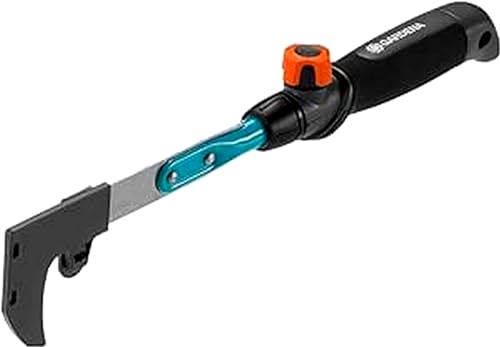
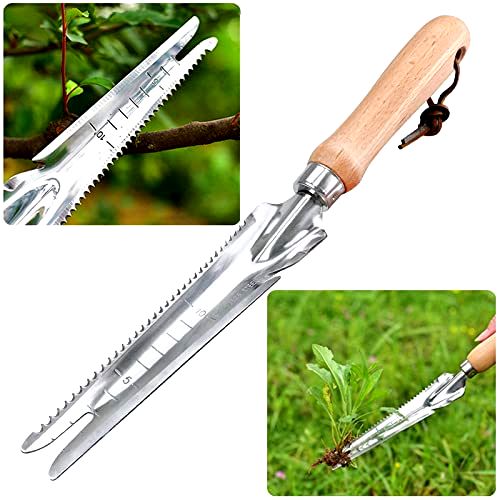
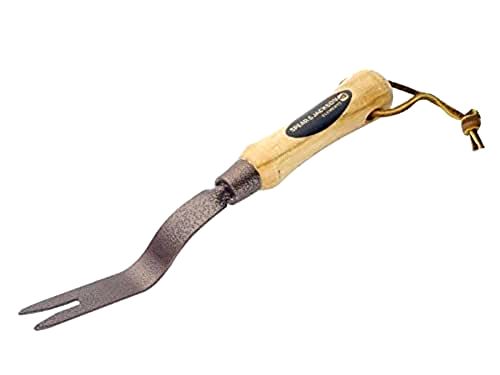
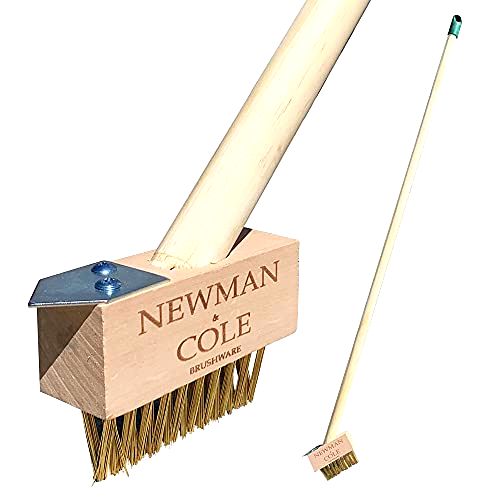

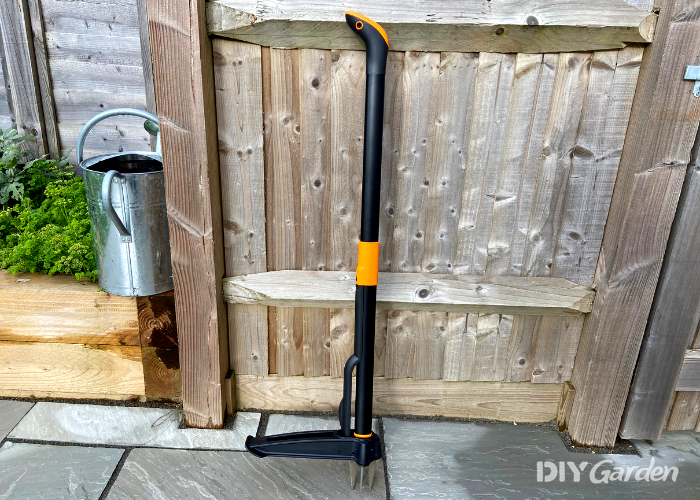


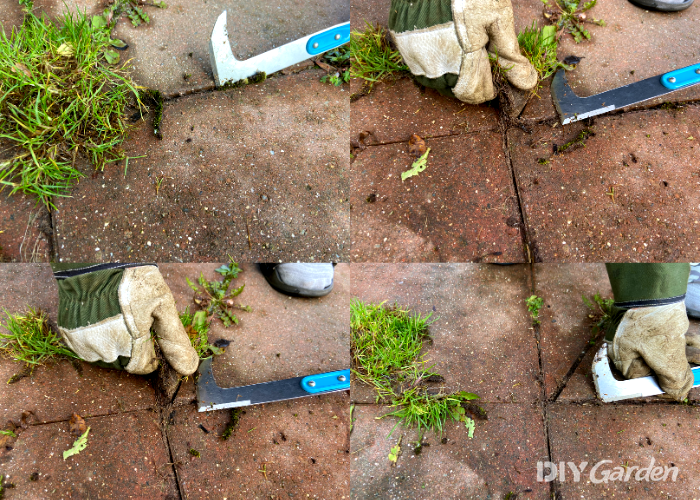



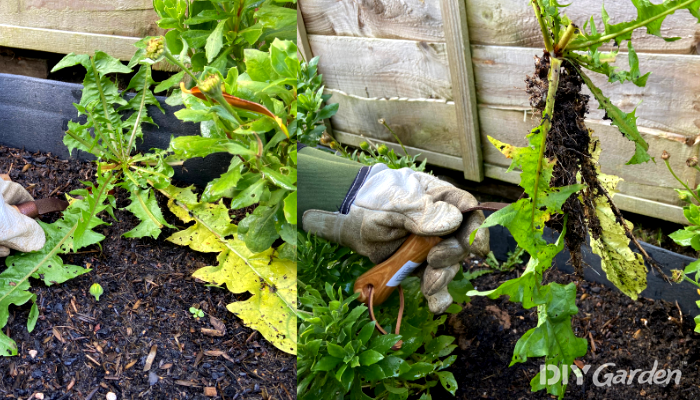

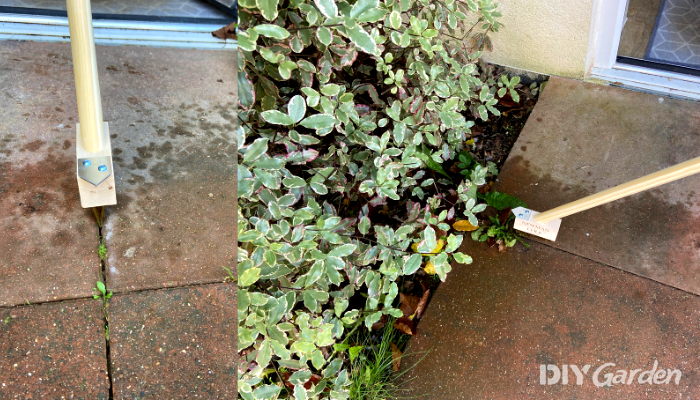

Share